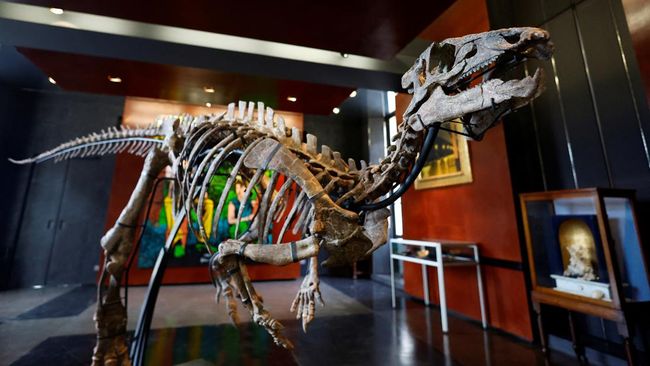Jakarta, CNNIIndonesia —
Some paleontologists have discovered the 256 fossilized eggs from 92 nests they thought belonged dinosaur herbivore, titanosaur. Eggs measuring 15 cm to 17 cm were found in India middle part.
Titanosaurus was a large, long-necked sauropod dinosaur. They lived about 66 million years ago in what is now central India.
Launch CNN, the eggs found in this clutch are close to each other. This shows that titanosaurs weren’t the kind of parents who cared about their eggs.
“Because the titanosaurs were so large, the nests were packed tightly together, the nests close together did not allow them to visit to maneuver or incubate those eggs.”
“That’s because the titanosaurs may have walked on their own eggs,” said Guntupalli Prasad, the paleontologist who led the study.
The discovery of a dinosaur nest is somewhat unusual. The reason for this is that unspoiled and “as is” conditions are needed for these eggs to turn into fossils.
This was revealed by Darla Zelenitsky, associate professor at the University of Calgary in Canada. Zelenitsky is a paleobiologist who studies dinosaur eggs, but was not involved in Guntupalli’s study.
The behavior of the titanosaur towards its nest is similar to that of birds and crocodiles. Based on the arrangement of the eggs, the experts concluded, the dinosaurs laid their eggs together in a colony, as many birds do today.
“These nesting colonies became a sight to behold in the Cretaceous era, where many landscapes would have been nested with countless dinosaurs,” says Zelenitsky.
Also, in this newly discovered nest, an egg is known to be of the ovule in ovo type. The term is used to refer to eggs that are attached to other eggs that are still forming.
This discovery led experts to conclude that titanosaurs hatched their eggs one by one and sequentially. This indicates that the titanosaur bears a resemblance to the behavior of birds when they hatch their eggs.
“Ovum in ovo and multilayered eggs are two common pathological characters that have been noted in archosaurs and other amniotes,” the experts wrote in their publication in the journal. nature.
“The current understanding is that the ovum in ovo is a unique feature of birds and that multi-layered eggs, which were previously identical only to reptiles, are now considered common among reptiles and birds,” he said. he still writes.
“The presence of ovules in the ovum of titanosaur nests supports the idea that they had functionally similar oviduct morphology to birds,” he wrote.
(lth/lth)

“Travel nerd. Social media evangelist. Zombie junkie. Total creator. Avid webaholic. Friend of animals everywhere. Future teen idol.”







